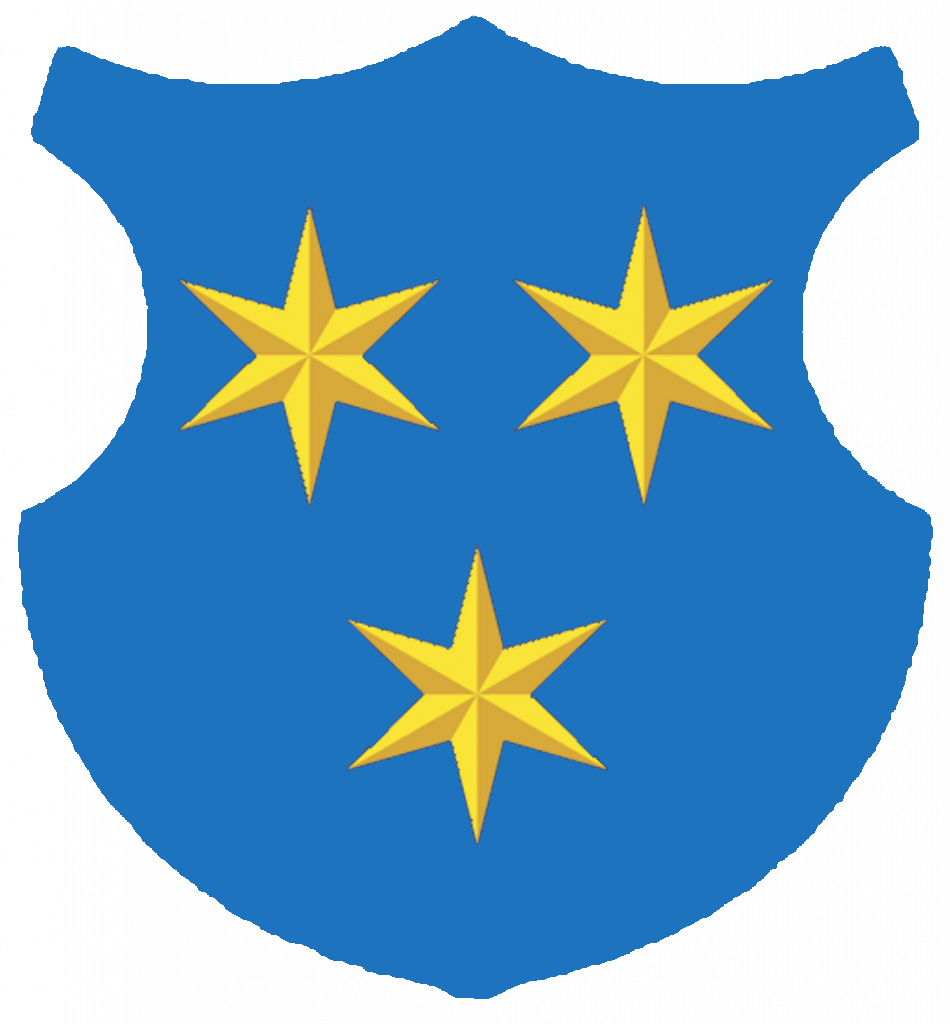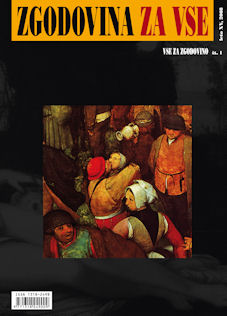LOVE AND MARRIAGE IN THE FLAME OF SINFULNESS
A contribution to the history of “morality” in Slovenia between the 16th and 18th centuries.
The author attempts to define the roots and the development of “civic morality” in Slovenia during the 16th and 18th centuries. The article is focused on the pedagogical (code of conduct, education) and theological (preaches, catechesis) commandments and the general pastoral guidelines with which the secular and church authorities aimed to discipline the bodies and minds of the believers/subjects during the process of totalitarianization of society. The author examines the turning points in the formal treatment of sexuality from a period of late medieval tolerance until the era of accentuated sinfulness characteristic of the time of Protestant reformation in the middle of the 16th century. The next century saw the establishment of a new Catholic catechesis based on the Council of Trent and marked by the colourfulness of the Baroque. In the first third of the 18th century, however, the first recognizable features of Catholic rigorism occurred. These were characteristic of the subalpine Hapsburg provinces in the last third of the century and helped shape the morality of the 19th century, together with its most recognizable consequence – the civic double standards that excluded sexuality and emotion from public discourse.
OUR NOBLEMEN’S READING: PHYSICS IN VALVASOR’S LIBRARY
Valvasor’s original contributions to the development of physics and technology are discussed in connection with his fellowship of the Royal Society of London. Special attention is paid to Valvasor’s library, with its many books by Robert Boyle. On the other hand, Valvasor bought almost all the works of Boyle’s opponent Kircher.
Valvasor’s interest in physics was closely connected to the Royal Society, which had been urgently seeking a correspondent from Valvasor’s part of Europe. Valvasor also had many Carniolan predecessors. He followed the example of the Auersperg library in building his own book collection. Slovenes later adopted Valvasor as one of their own, but did not provide the same treatment for the erudite Count Volf Engelbert Auersperg.
REMEMBERING HISTORY AS A WAY OF FORGETTING THE PAST
The column of St. Mary before St. Jacob’s Church in Ljubljana
The author examines the ways in which ruling elites present their view of the past in order to project their interpretation of history and exclude alternative ones. His analysis of the “fight for interpretation” is based on St. Mary’s column, which was erected in 1862 before St. Jacob’s church, and is one of the oldest public monuments still in place in Ljubljana. The article shows how a typical sacral monument constructed in the contemporary monumental vogue reflects the ideological and political situation of its time, while its subsequent adaptations reflect changes in the ideological and political situation.
“VRHNIKA’S ELEVENTH SCHOOL” – AN INSTITUTION OF RESPECTABLE AGE BUT POOR REPUTATION
Following the traces of an old satirical saying from Kranj whose name and Vrhnika’s honour were saved by Cankar
The article was the result of the discovery of an archival document that mentions the caustic gibe saying Vrhnika’s Eleventh School as early as 1744. Subsequent research showed the phrase to be very old, and that it entered Slovene lexicography in the 19th century and soon underwent a complete modification in its meaning. Slovenia’s greatest writer, Ivan Cankar (1876-1918), himself from Vrhnika, in a literary work in 1914 deprived the scathing remark of its mocking tone, which was directed at the pride and ignorance of the people of Vrhnika. In his usage, the phrase referred to the “acquisition of life experience by children outside school and family”, which became its standard meaning in Slovene phraseology, while its original mocking tone slipped into oblivion.
The original meaning of the phrase Eleventh School is connected with the past names of grades in regular school, the eleventh grade being the “highest”, even though nonexistent. The reason for the oral tradition’s associating it specifically with Vrhnika could be twofold: either because of a stereotype about the conceited people of Vrhnika, or because of some actual but forgotten comical event. The only known analogy of Vrhnika’s Eleventh School is the so-called “High School” in the country town of Gablitz near Vienna.
MOVEMENTS AND ROUTES OF “ZELENI JURIJ”
The article takes a phenomenological and comparative view of the figure of “Zeleni Jurij” as we know it in some parts of Slovenia and Croatia. Certain parallels to this part of our cultural heritage can be found in the wider European and non-European area, from the Middle East to India. These links are not only typological but often also genetic.
“JEWS OTHERWISE ARE UNRELIABLE AND WE PREFER NOT TO TRUST THEM”
The contrasting views of Jewry in Slovene newspapers from the Gorizia region
In the 19th century the Jews living in and around Gorizia began to integrate into local society. Once the door of the ghetto opened, individuals began to blend into the surrounding environment, where they wanted to become loyal citizens, not only second-class townspeople. Their colloquial language and culture had always been Italian, so it was not surprising that they wanted Gorizia to become part of Italy. Their coexistence with the Slovenian population was not a problem as long as the interests of the groups did not conflict. They had contacts with the Slovene population as merchants, as their advocates in legal suits and as medical workers. Occasionally, intolerance and anti-Semitic feelings sprang up as well. These were a sign of envy due to Jewish success in business, and in Slovenians such feelings were particularly strong because of the pro-Italian sentiment among the Jews from Gorizia. The article describes some opposing views and the attitude toward the Jewry in the newspapers Soča and Gorica in the last decades of the 19th century.
“IF YOU MUST, GO TO A PUBLIC HOUSE WITH A GOOD REPUTATION”
Code of conduct in public houses in the light of etiquette rules of the 19th and the beginning of the 20th century
For townspeople frequenting public houses and coffee shops represented one of the most characteristic forms of social life in the 19th century. For this reason this was a common subject of books on etiquette rules in the 19th and the beginning of the 20th century. Their authors, mostly Catholic moralists, advised townspeople to go only to public houses that enjoyed a good reputation and only on special occasions. They taught the guests and publicans how to behave there. Women, in particular, were warned about what to wear on public premises and when they were allowed to visit them in the first place. Unlike churches, public houses teemed with various threats to an individual’s purity. It was particular public houses of a lower rank, the obscure taverns and dives, that featured a lively intoxicated life, which often resulted in scuffles and fights, gambling and indecent dancing.
MOTHER’S PACKAGE WRAPPED IN „TREASONABLE MATERIALS”
The Slovene soldier and politics during World War I
The published diaries, memoirs and written correspondence of Slovene soldiers who participated in WW I commonly deal with themes such as the soldiers’ fear of death, the appalling conditions on the front, and anxiety over loved ones, whose situation in the hinterland was often only marginally better than that of the soldiers because of food shortages. It is understandable that, amid the horrors of the battlefield, politics did not represent a priority for them. This is particularly evident from the diaries and letters, which are a much more reliable indicator of the individuals’ spirits than the later published memoirs. It is particularly the memories of those participants in WW I who opted for the anti -Hapsburg side that often feature views characteristic of the time when the memoirs were published and not of the years during the 1st World War. We can say, roughly speaking, that the Slovene soldier followed politics and had his opinion about the events. He usually expressed it in the form of a brief comment. He followed political events mostly through newspapers, as long as these could reach him at the front. Only a small part of the information was obtained through letters. Most Slovene soldiers remained loyal to the Hapsburg monarchy, even though they were critical of it. They thought Slovenes had a future within a restructured Hapsburg monarchy along the lines of the pre-war tripartite arrangement.
AFFIRMATION OF ORAL HISTORY IN THE CONTEXT OF NARRATIVE HISTORIOGRAPHY
The various historiographical approaches differ from one another mostly in that some advocate history as a narrative, a history of events and individuals, while others see history as a set of structures or long eras. The article focuses primarily on the turn towards an assessment of narration in historiography, or the “linguistic turn” that was the product of narrative historiography. One factor that contributed to this was oral history, which developed in the 1970s. In the 1980s the history of marginal social strata opened up some methodological issues that enabled oral history to establish itself within historiography.
“CLIO ON THE COUCH” – PSYCHOANALYSIS AND HISTORIOGRAPHY
On the basis of Peter Gay’s Freud for Historians, the article problematizes the process of psychoanalyzing the historical past. This consideration is followed by an attempt to capture Psychohistory in geographical and historical terms. The basic premise of the article relates to the immoderate ease with which history is written through the prism of a psychoanalytical comprehension of the unconscious that is by definition timeless and eternal. Reductionism to psychological factors is at the same time a wider problem that not only includes historiography but also appears as a trend in other disciplines. As an aid to the consideration of the relationship between psychoanalysis and history as two disciplines, this article is dedicated more to attempts at than the actual epistemological fusion of the two.

